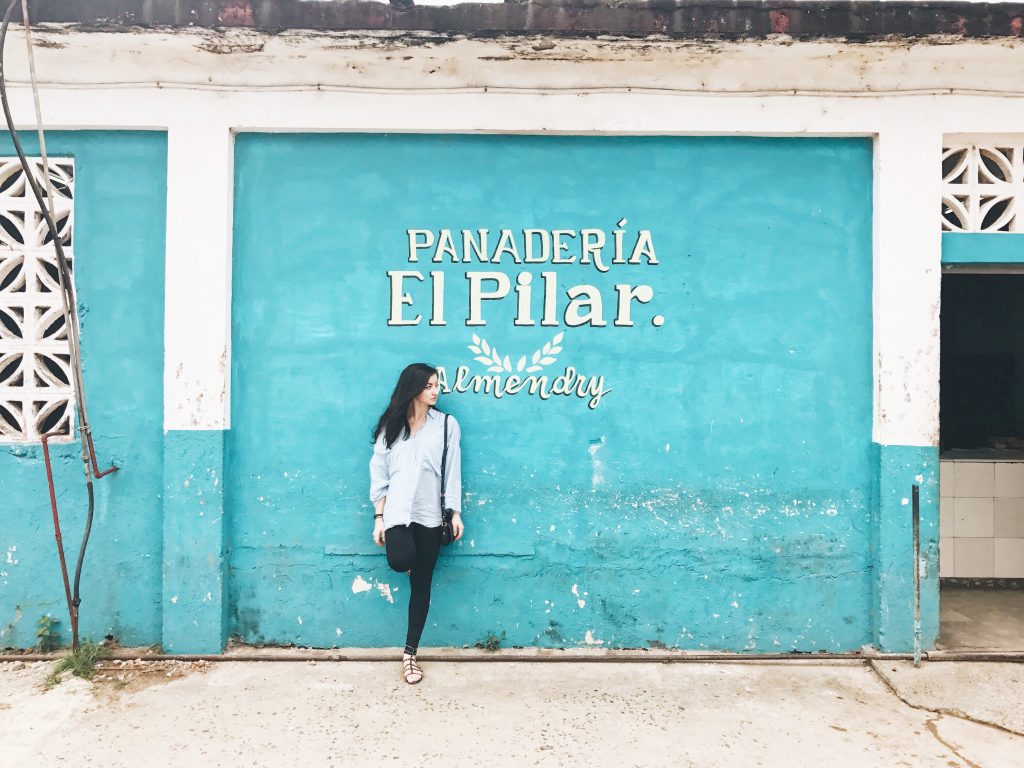Contents
We always want things that we can’t have and for a long time Cuba was something unattainable for me as an American citizen. Intriguing. When Cuba opened its doors to major American airlines, I booked my flight on a whim. Growing up I spent a lot of time in post-Soviet Ukraine. I am no stranger to many of the intricacies of the Cuban lifestyle, which in many ways mirrors that of Ukraine 15 years ago. To you, it is likely that Cuba will be a tremendous culture shock. Nothing that I write here can prepare you for the emotions that you will experience in Cuba. What I will say, however, is that if you have an open mind, a sense of compassion, and the longing to get deeply intertwined in Cuban culture – it will be like nothing you have experienced before. Get lost in one of the most unique, untouched, and authentic cultures that you will ever experience. I was intrigued to fly south for just 3 hours to a land of scarce internet service, non-working debit and credit cards and a dollar that holds less value than a peso (I’ll get into that in just a second). After all, unlike Ukraine, Cuba is right in my backyard. Ditch the 5 star hotels and forget Michelin starred restaurants … welcome to Cuba.
Make sure to check out the map on the bottom of this post that you can save & also some key takeaways. If you are looking to book your trip, feel free to email me and I can help navigate you to the same people I stayed with and to my taxi driver that I can happily vouch for ! [email protected]
The Basics
Money
There are two forms of currency in Cuba: The Cuban Peso (CUP) and the Cuban Convertible Peso (CUC). You can only get these exchanged in Cuba, not in the foreign markets. The reason for the latter is admittedly complex but what you need to know is that as a tourist, you will be transacting with the CUC. The U.S. Dollar is not the favorable currency to exchange in Cuba. As a matter of fact you will get hit with a fee if you exchange dollars. The fee is standard and for $1 USD you will get .87 CUC. Before traveling to Cuba from the U.S, my suggestion is that you contact your bank and get Euro’s. 100 EUR will get you around 106 CUC in Cuba. If you exchange your dollars to Euro’s in America you will get approximately 95 EUR’s for 100 USD which means that in Cuba this will translate to 100 CUC. If you just exchange 100 USD, you will only get 87 CUC because $100*.87 = 87. Bottom line: Get Euro’s prior to traveling. Do not bet on using credit or debit cards because they are virtually not accepted anywhere so bring enough money with you to last you throughout the whole trip. There are multiple money exchange spots around the cities but the lines are incredibly long. Exchange your money at hotels to avoid long lines. In my experience, there was little to no difference in exchange rates for converting currency so value your time ! Check your bills to make sure that they are “Convertible Pesos” and not regular Pesos especially when receiving change in cabs and restaurants and etc. The Convertible Peso is worth 25 times more than the regular Peso so always double check or you can lose out on money !
Flights
Although leisure travel to Cuba is technically not permitted, you may obtain a visa if you are going for a learning and cultural experience. This is also known as the People to People Educational Visa # 515.565 (b). You will get your visa at the airport for an additional $50 once you complete a simple form. If you are looking for a Caribbean beach escape, Cuba is not the place for you. That’s not because the beaches aren’t beautiful – they are. There is so much to admire about authentic Cuban culture and you should value this opportunity to experience a step back in time and fall in love with Cuba for its personality, not its looks.
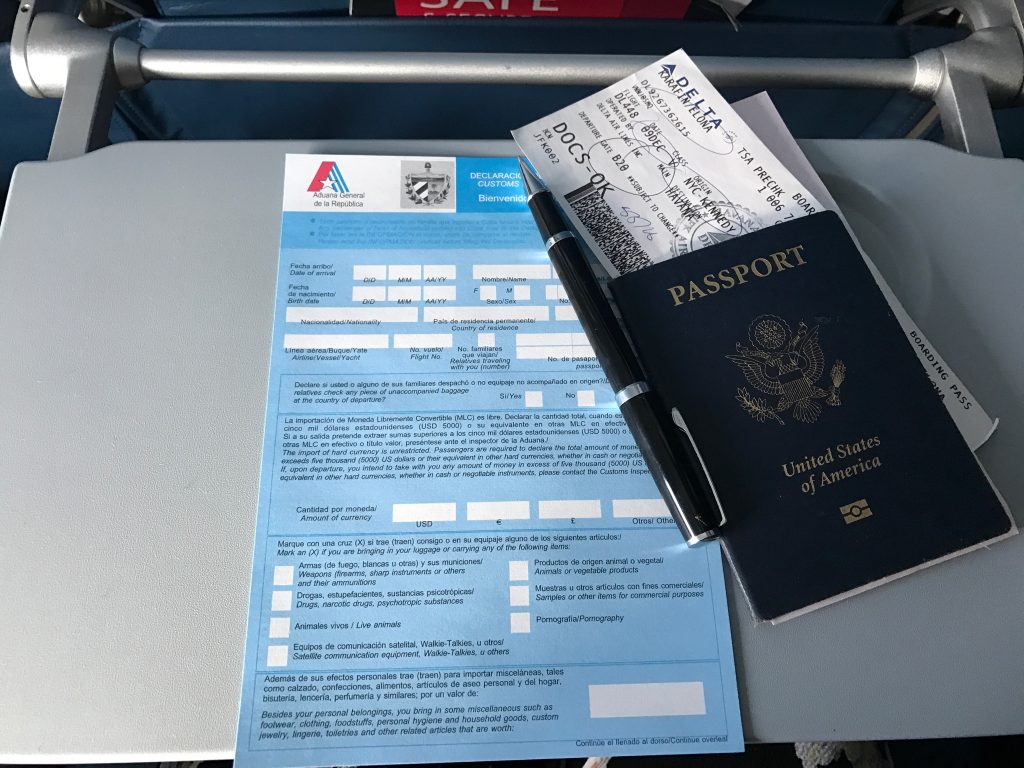
Accommodation
To qualify for the People to People Educational Visa you need to have a good idea of what you are planning to do during your stay in Cuba. The best way to experience Cuba is to live the way Cubans live: with them. Casas Particulares are the most common form of accommodation in Cuba. Think about it like Airbnb (which, by the way, is available in Cuba). Casas Particulares are the best housing options that allow you to experience the local life – something you can’t get in a hotel. I stayed at Casa Mara, a beautiful yellow home with 6 rooms, 4 of which are rented out to travelers. My room had it’s own shower and it’s own separate entrance. The reality is that the hotels I’ve seen were no where near what you would expect quality and service wise. In other words, they’re not worth it. Casa Mara is owned by a wonderful family that not only welcomed me with open arms, but also cooked delicious authentic food and taught me about Cuban culture. By booking accommodation through a Cuban agency, you will also be offered an airport pickup. The cost from the airport to the city center is 25 CUC – this rate is standard and a driver will be waiting for you with a sign! Casa Mara is located in Vedado – walking distance from Old Havana but also a very non-touristy part of town. I didn’t want to be surrounded by tourists all day so my word of advice to you: live in Vedado, visit Old Havana.
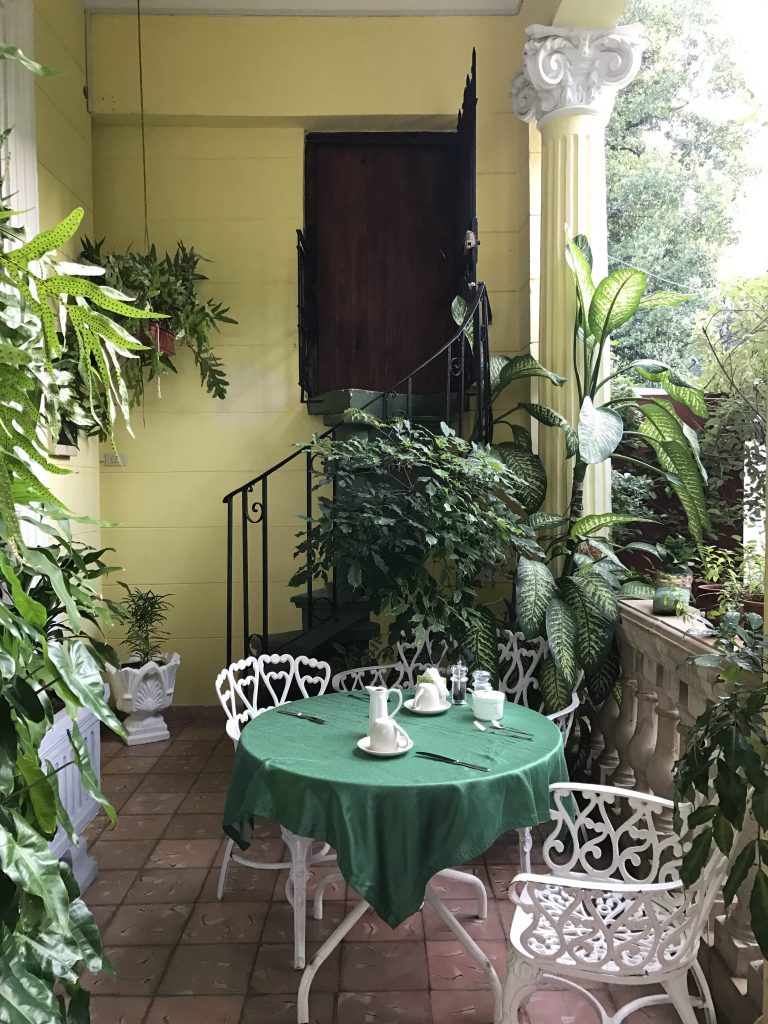
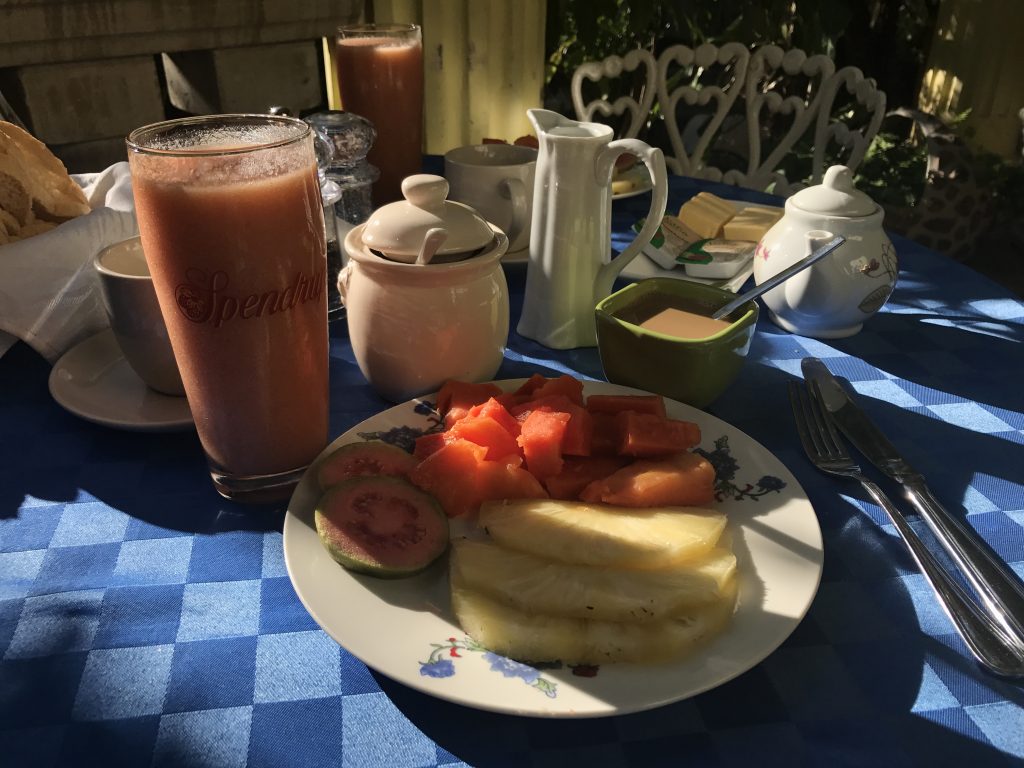
Always keep in mind that many supplies in Cuba are scarce and most of the people are from low-income families. If you are staying at someone’s Casa, consider bringing them a small gift that they can use as a token of appreciation (for ex. a cup, towels, sheets, cutlery, etc) You should also make sure that you have all the necessary toiletries with you like shampoo, lotion, etc. Water may not always be available the way you are used to it, so definitely do not expect to take any baths.
Viñales
When most people think of Cuba they imagine Havana and old American cars. When I think of Cuba, I think of Trinidad, the best-preserved colonial township and UNESCO World Heritage Site. When I think of Cuba, I think of Viñales; a small town where creamy colored houses stack the streets like a pack of starbursts. I think about the beautiful Viñales Valley, the tobacco fields, and rusty red roads. Viñales is a small town about 2.5 hours southwest of Havana and it is an absolute must if you are in Cuba.
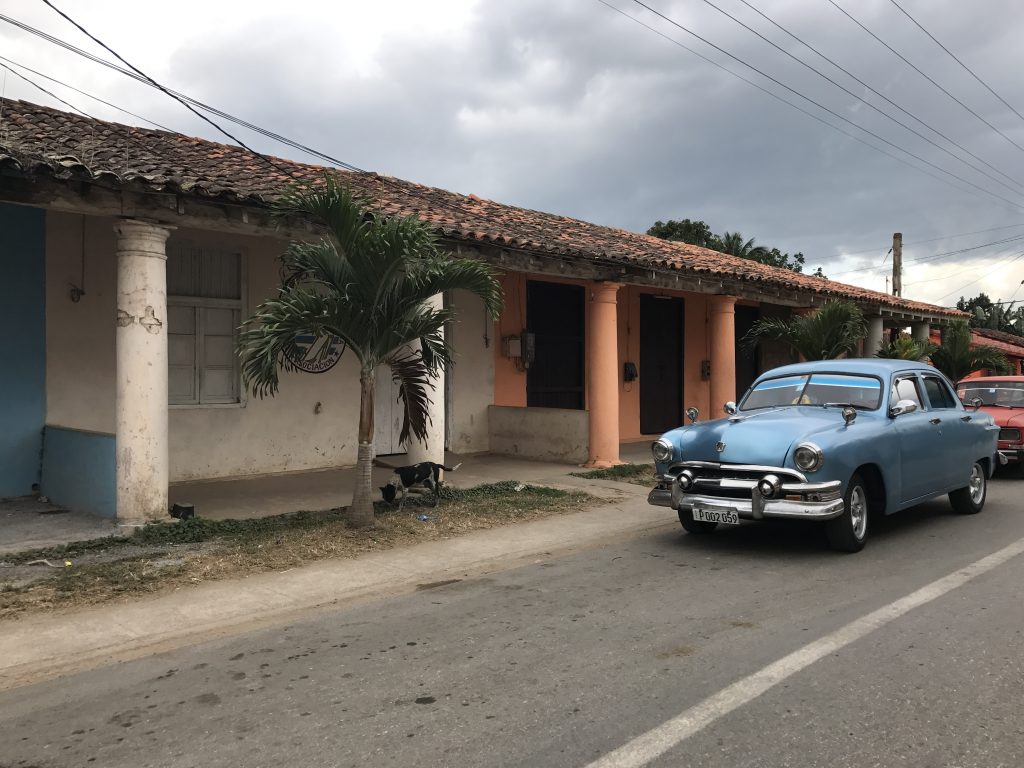
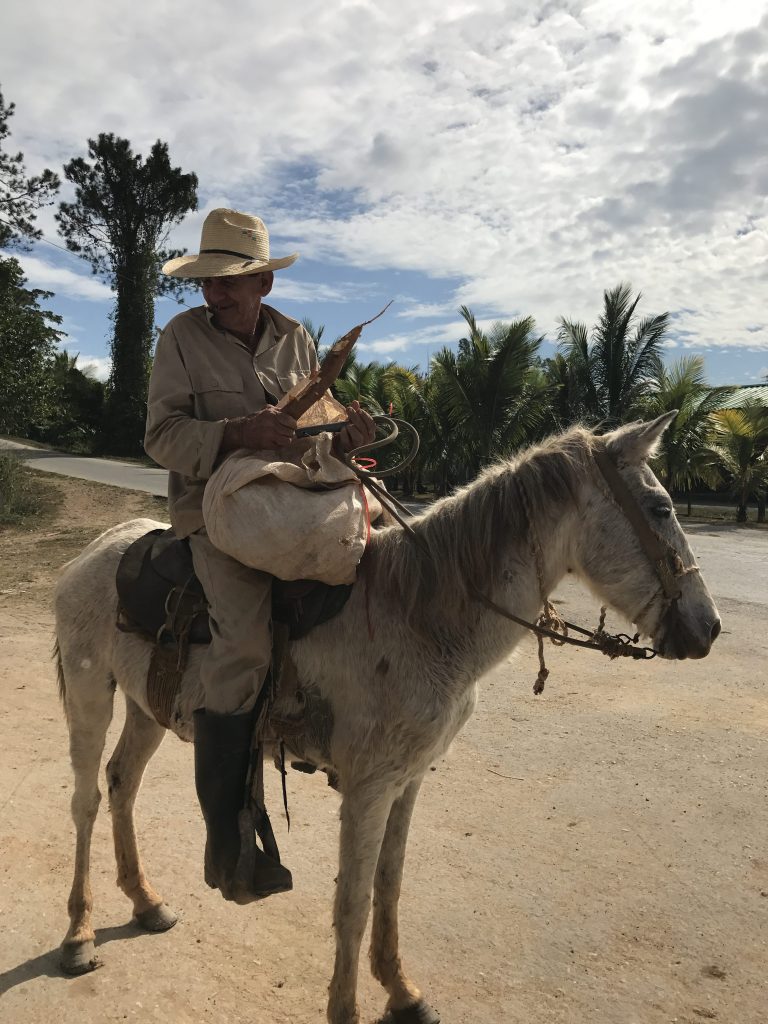

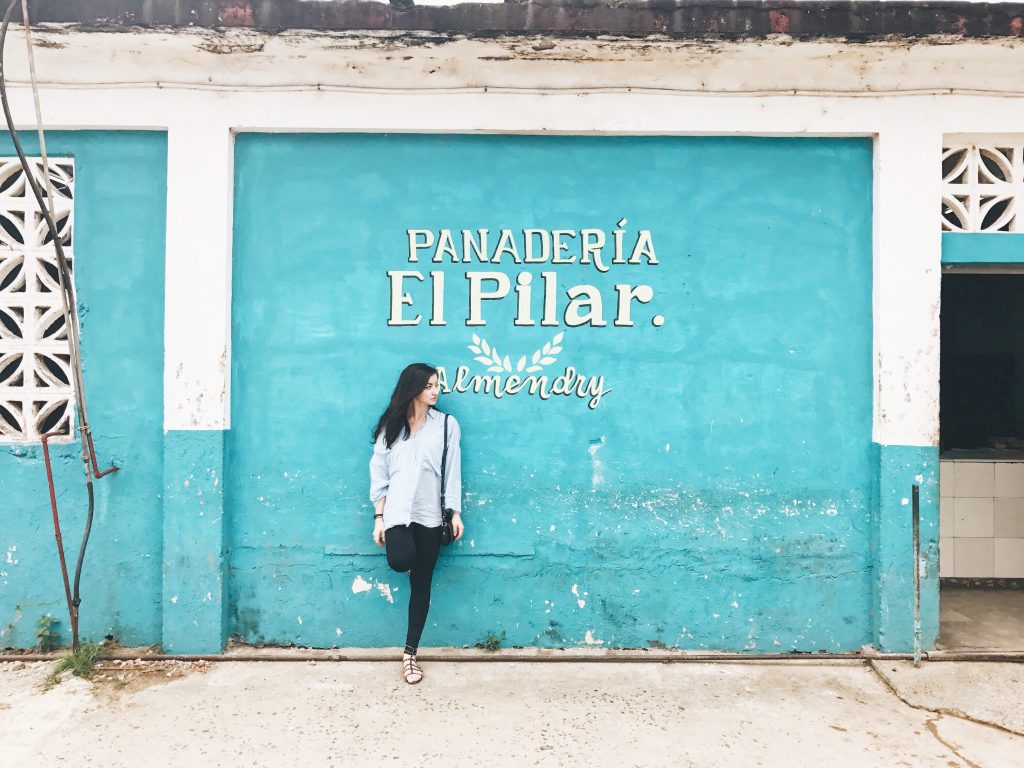
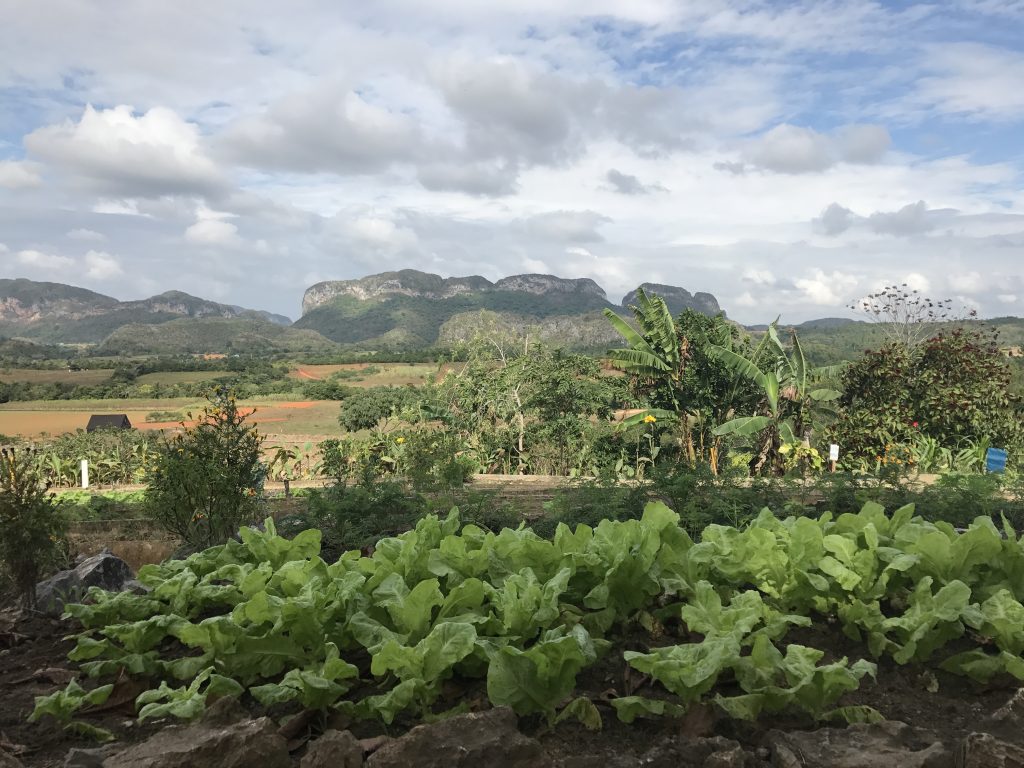
The same driver that picked us up from the airport took us to Viñales. The cost for the entire day with gas included was $160. Having a driver was the greatest asset we could’ve ever dreamed of. In Viñales virtually no one speaks English so unless you can speak Spanish, it is very helpful to have a local with you. Locals in Cuba also have access to and know all the best authentic places to eat – the best authentic places to eat also happen to be the cheapest!
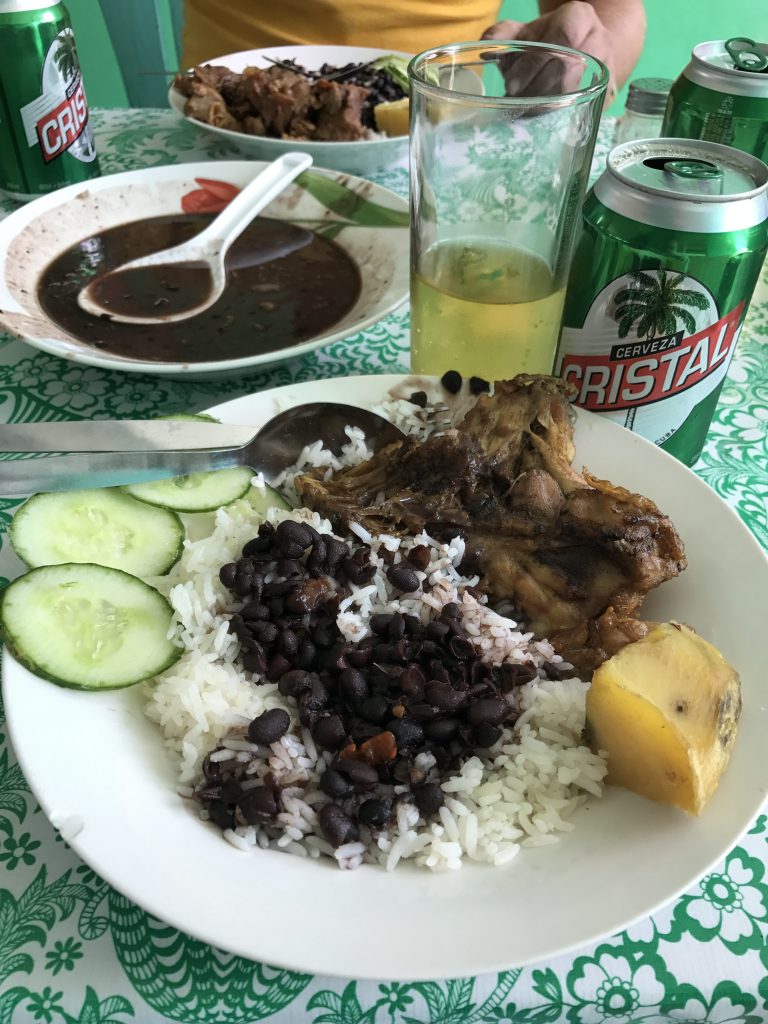
We quickly learned that the absolute best places to eat were the low key spots that don’t look very inviting … but where the food was unbelievably good! The plate above came out to be just about $3 (beer included).

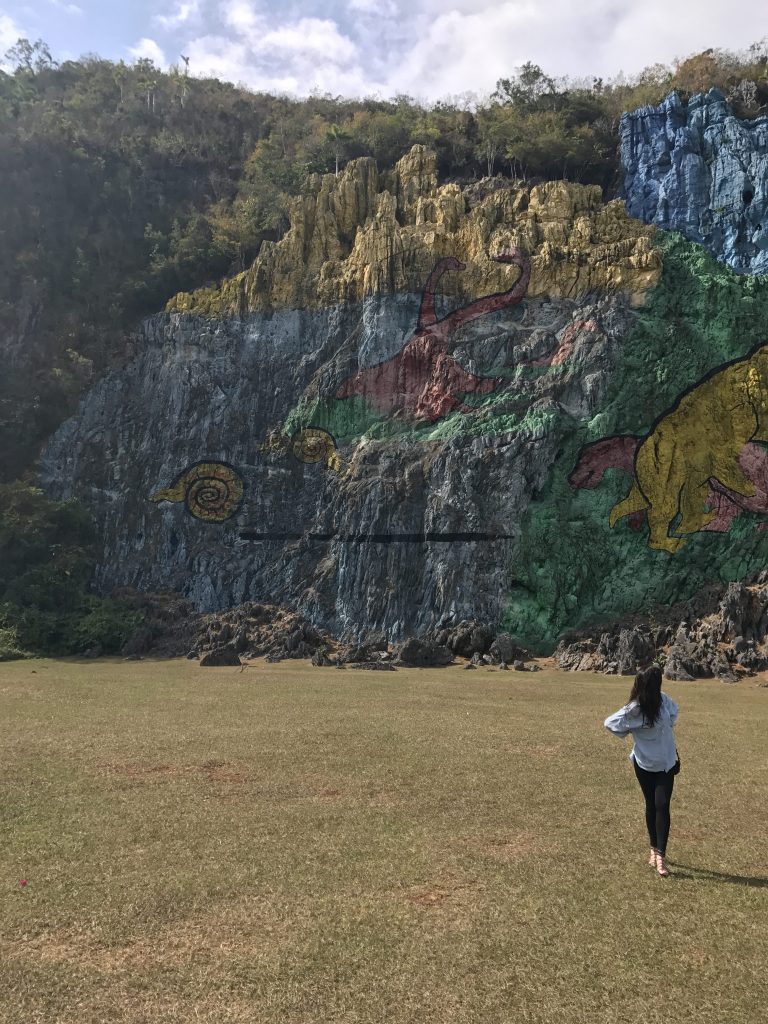
Make sure to stop by the Viñales Mural de la Prehistoria !
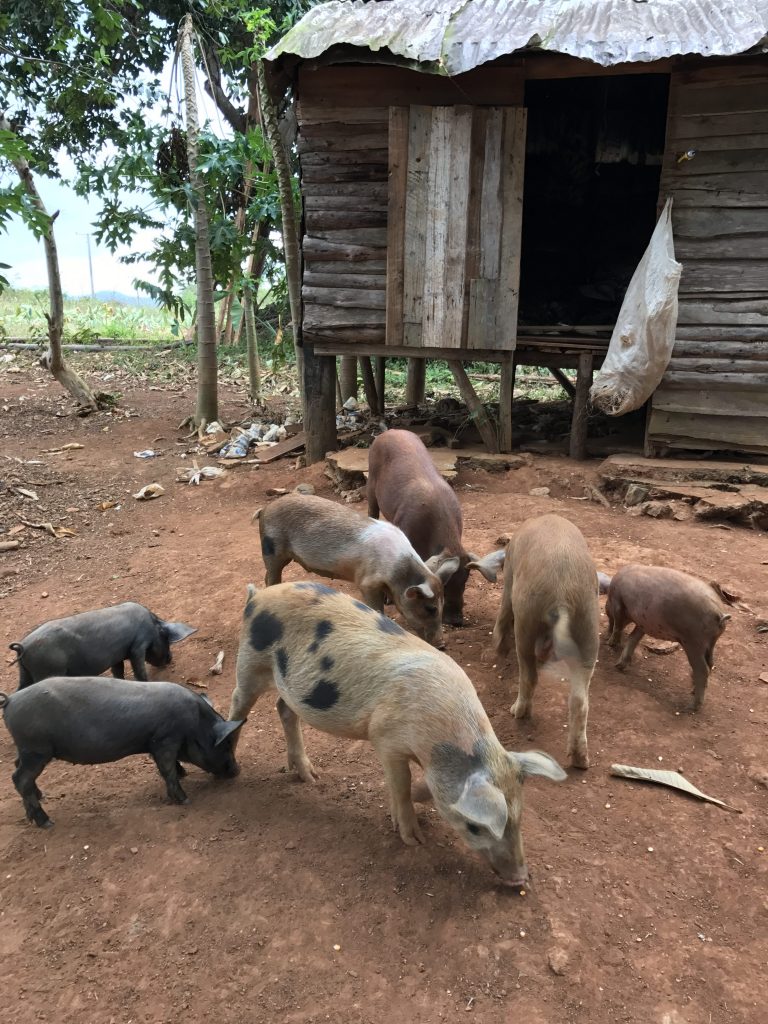
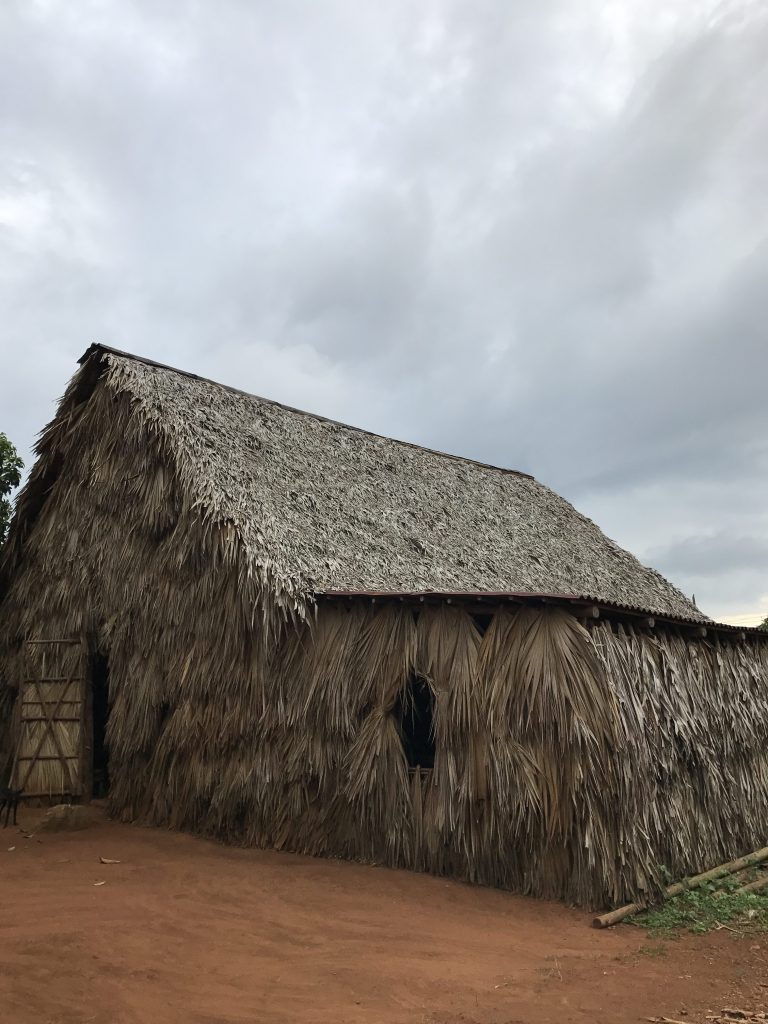
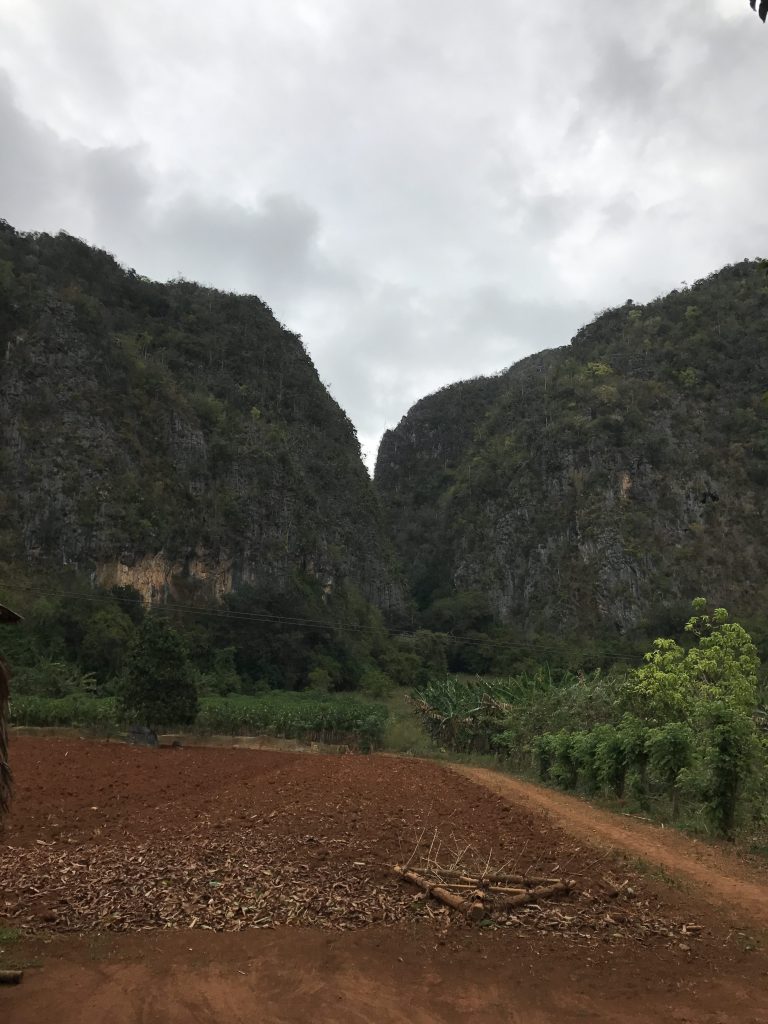

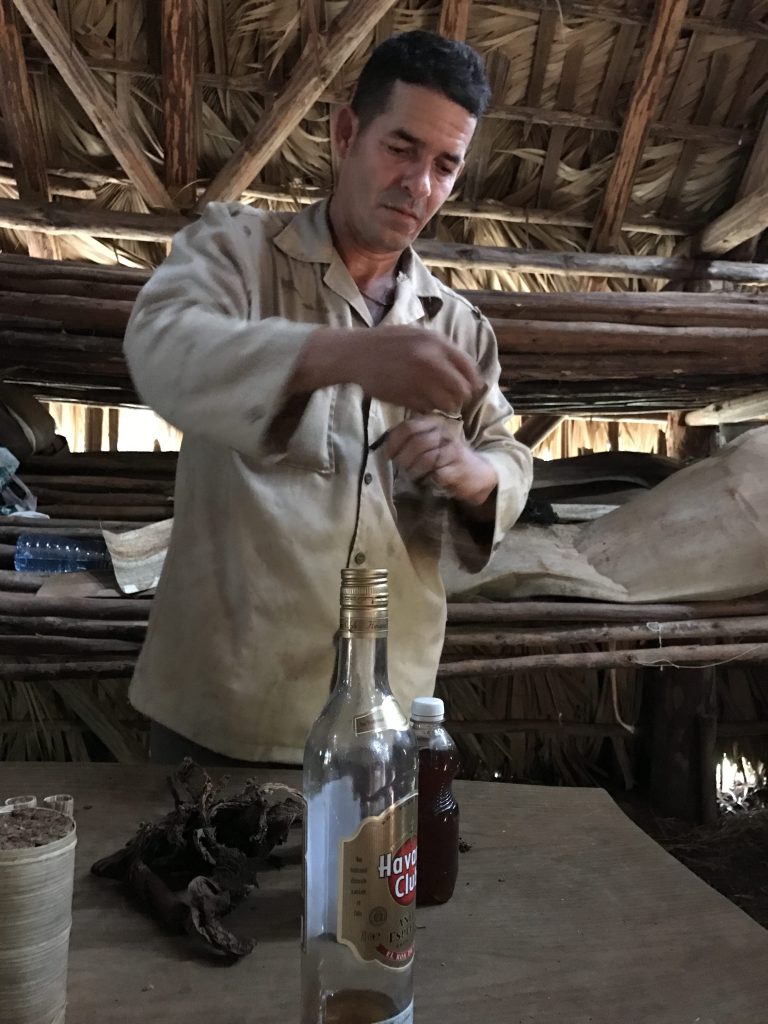
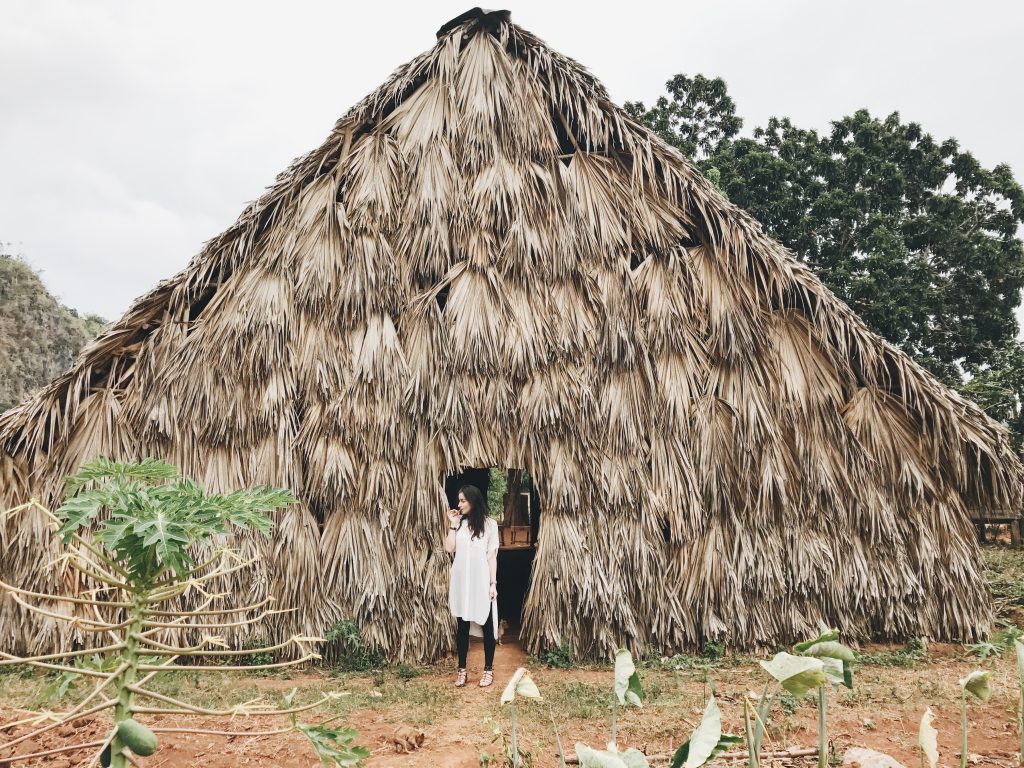
Viñales is a UNESCO World Heritage Site that is best known for its tobacco production. The fields are surrounded by a massive mountainous landscape and on a rainy day, the mountain tops scramble to make their way out from behind the thin clouds. Thanks to our new local friend, we were able to find a farmer who lived on a tobacco farm. He was kind enough to let us in and showed us how cigars are hand rolled. After smoking what I can confidently say was the best cigar I ever had, I was shocked to learn how regulated the cigar industry is in Cuba. As a matter of fact, most Cubans don’t even smoke cigars because they are too expensive. Tobacco farmers are obligated to fill a production quota out of which the government takes 90%. The latter get branded with popular names like Cohiba and Romeo y Julieta – and then get sold to the public. The remainder of the cigars are typically sold by these farmers to visitors like myself (at a way cheaper rate than what you would find in stores). The average monthly salary in Cuba is about $25, yes you read that correctly. For this reason I think it is very important to support locals. Buying a few cigars can genuinely change a lot the farmer.
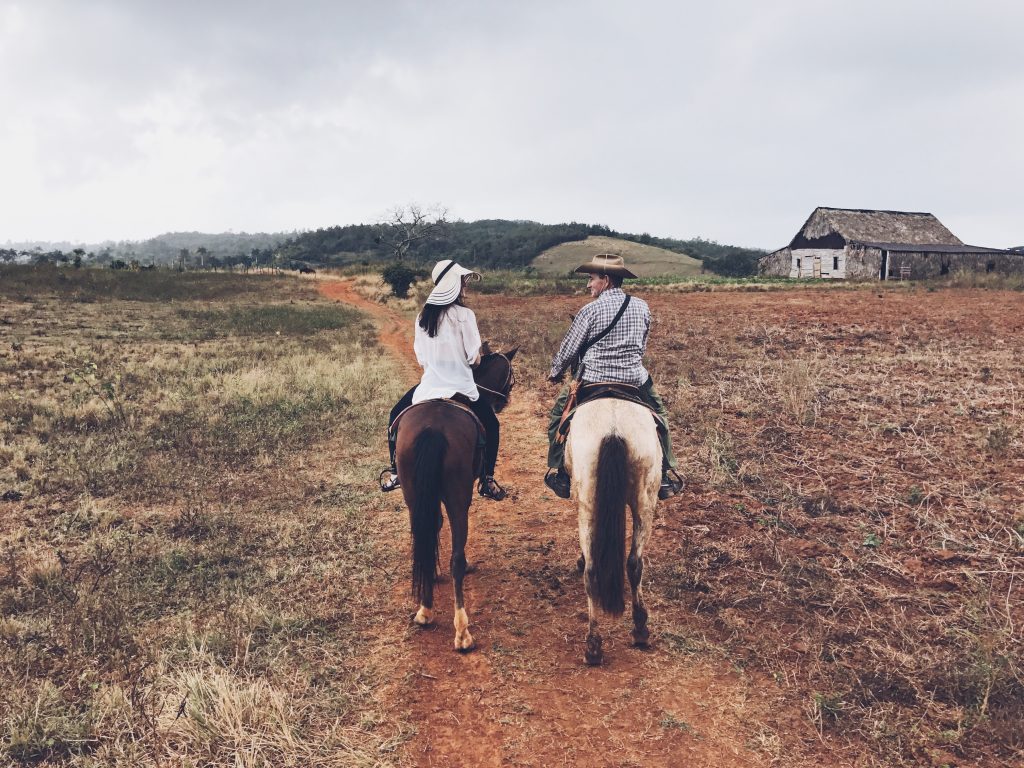
A trip to Viñales won’t be complete without riding a horse ! This was my first time riding a horse and guess what ? There were no forms to sign, no helmets … just a local farmer who let me borrow his horse for $5 for an hour. Luckily for me, he took the ride with me because I was clueless. This is the beauty of Viñales …
Havana
Havana is truly one of a kind – at times it resembles Paris, at others it resembles Barcelona. Every corner you turn there are pastel colored buildings … some with old paint slowly peeling away, others glistening in bright hues under the sun. Cuba is a poor country and evidence of the later is visible everywhere you go. It will shock you because no matter how beautiful the blocks may seem, you will always be reminded of the impoverished, run down houses and the immense levels of poverty. In most places, it is normal for locals to keep their doors and windows open and many people sit outside, children play in the streets, and stray dogs and cats roam around the blocks looking for food. The locals are friendly, kind and laid back. In perfect harmony, the visibly opposite economic structures collide and create the complicated dynamics of Old Havana. Personally, I enjoyed spending more time in local areas like Viñales and Vedado while Old Havana was densely overpopulated with tourists from all over the world.

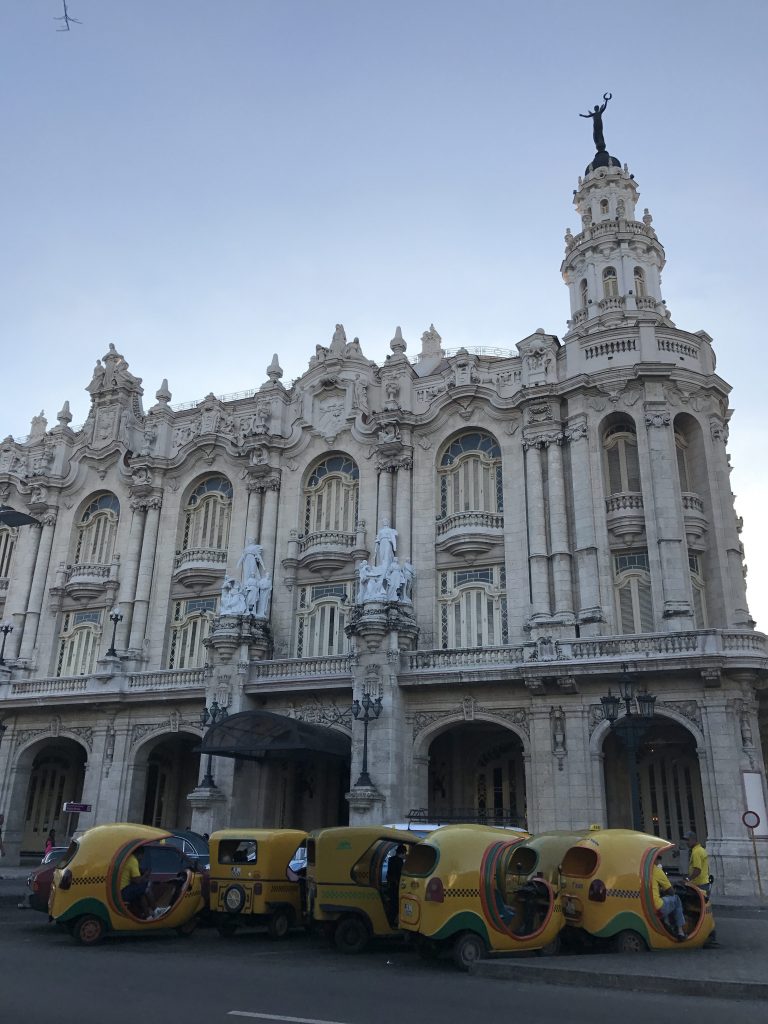
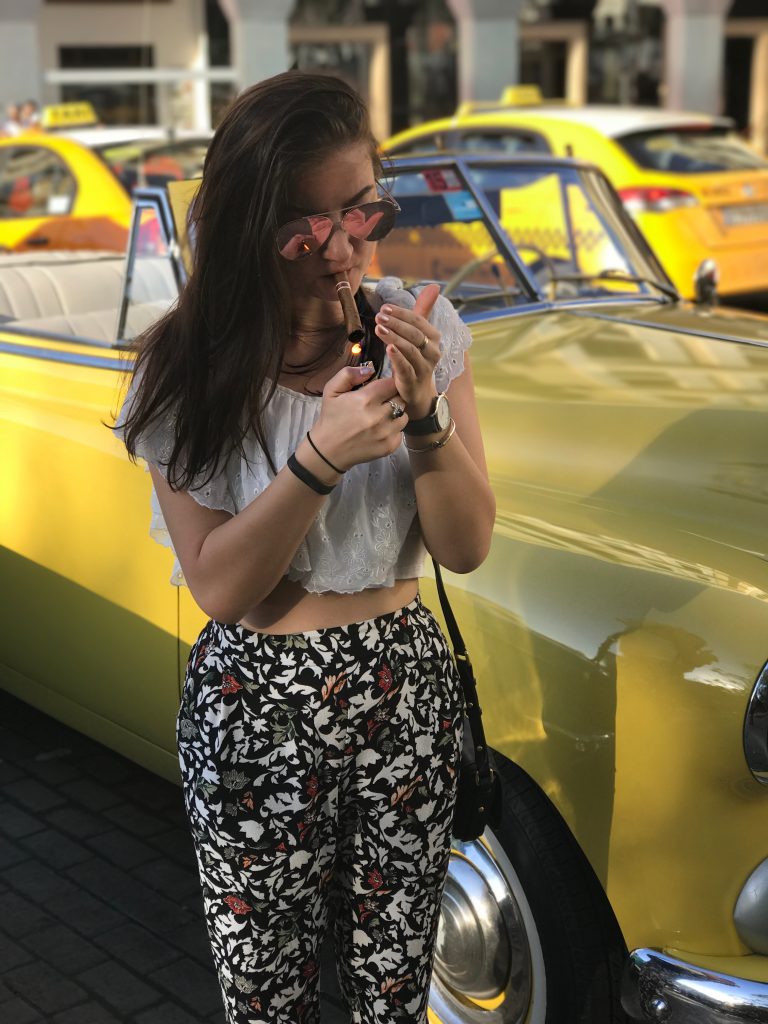
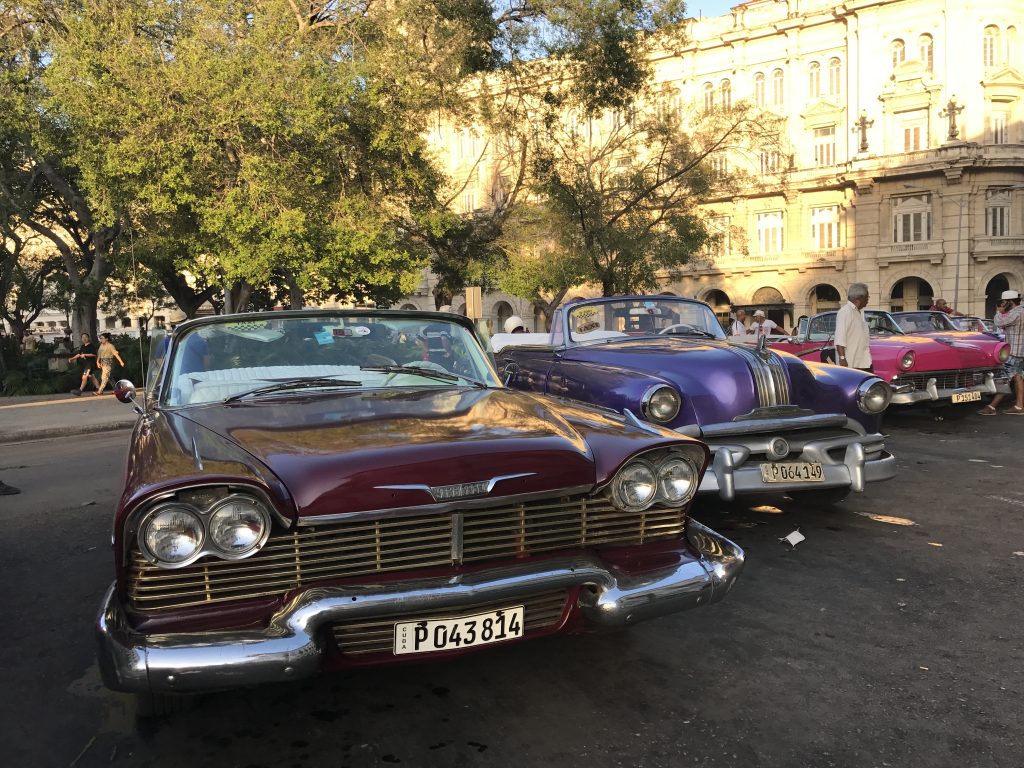
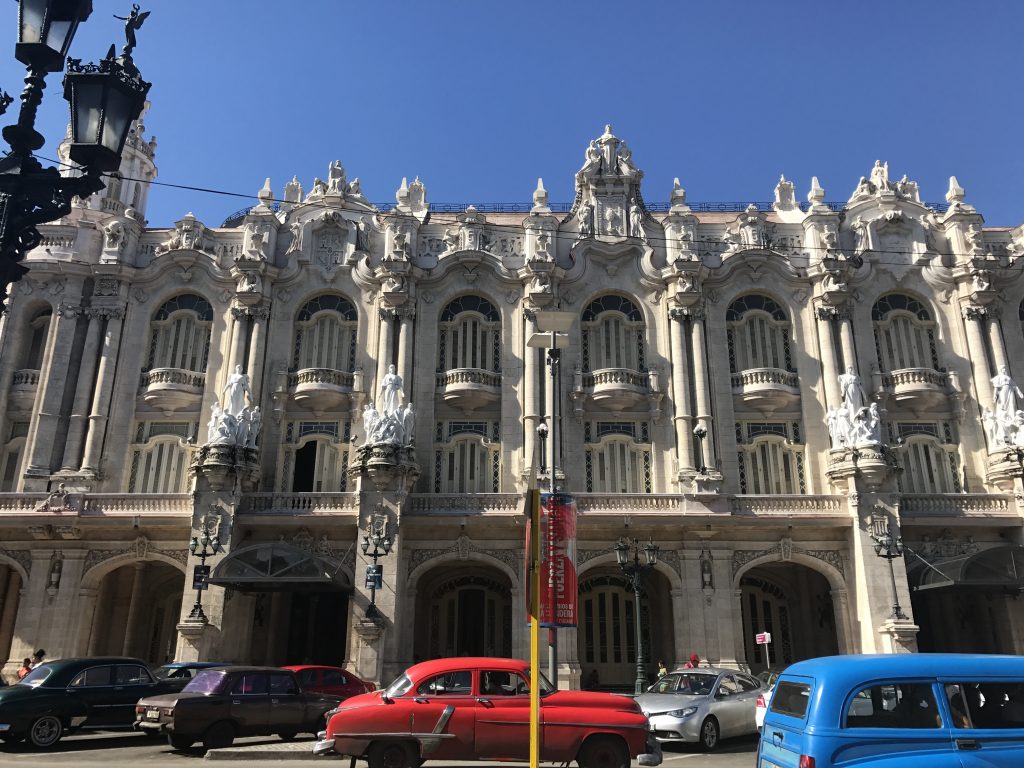
You can get a ride in one of the fabulous oldschool cars for anywhere between $35 – $50 CUC per hour. There are two areas where the majority of the best cars are – the cheaper option is in front of the Iberostar Parque Central Hotel. There you can get an hour ride for $35 CUC, while on the other side of the park the prices are approaching $50 CUC. For many of these drivers, these cars are their most prized possessions and consequently their most valuable assets. I was surprised to find out that some of these cars start at around $40K U.S. Dollars in price. Now imagine a country where the average salary is $25 ? Buying a car is practically impossible, even with a lifetime of savings.Most of these cars have been passed down from generation to generation. With that said, no, you can not rent one of these to drive on your own. If you get really lucky, the driver may let you get behind the wheel – hope you can drive stick !
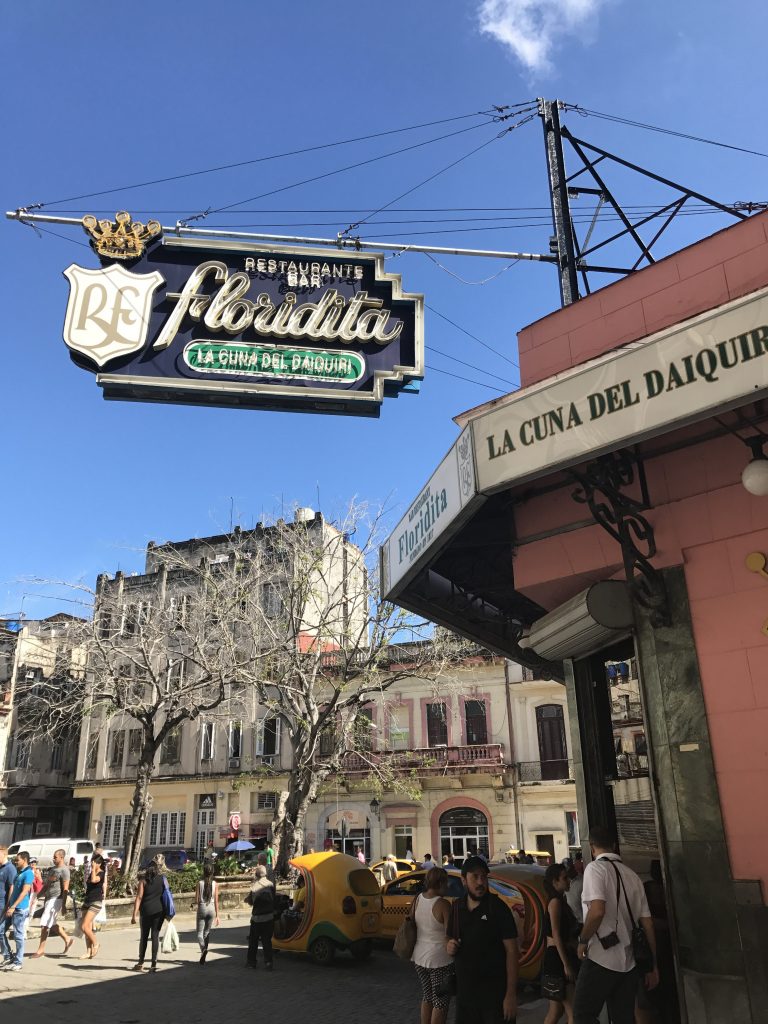
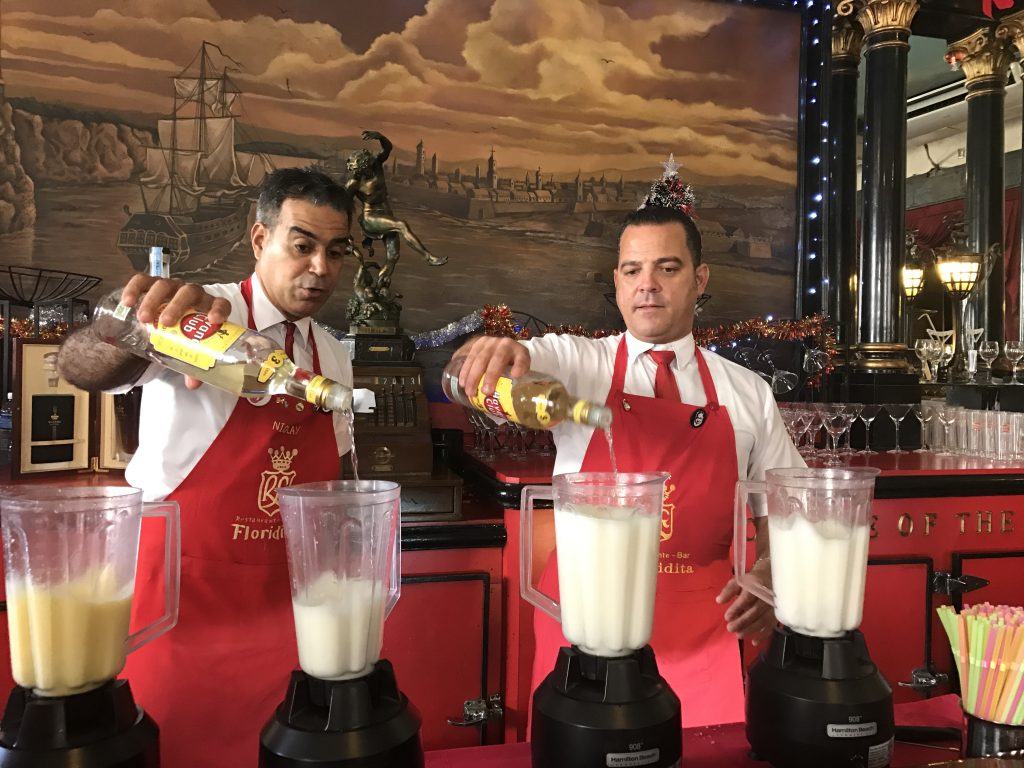
A popular tourist hot spot is Floridita where you can enjoy all different flavored daiquiri’s for $6 CUC a pop. Nobel Prize winning American author Ernest Hemingway was a regular at this bar – which makes it such a hot spot for foreigners !


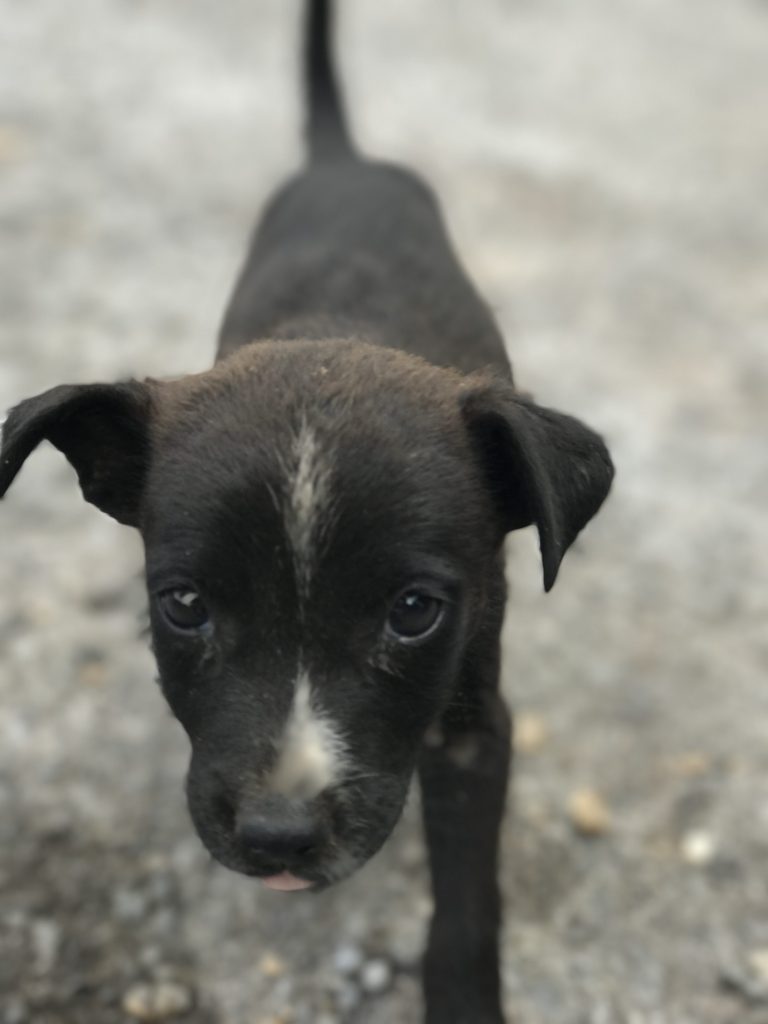
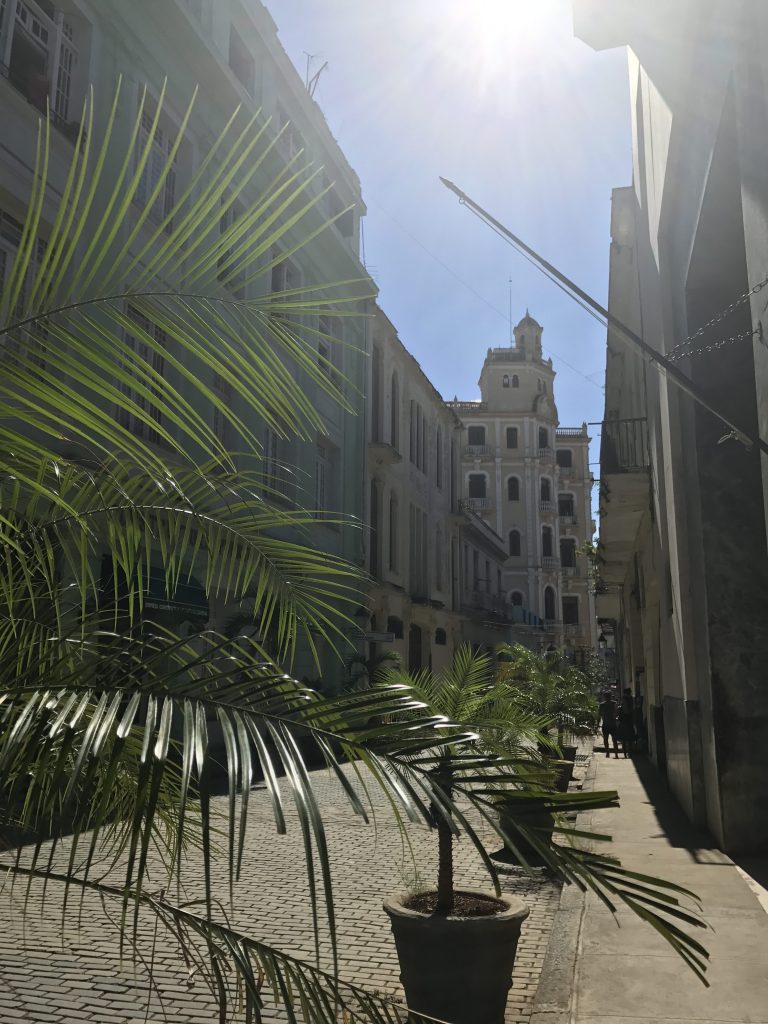
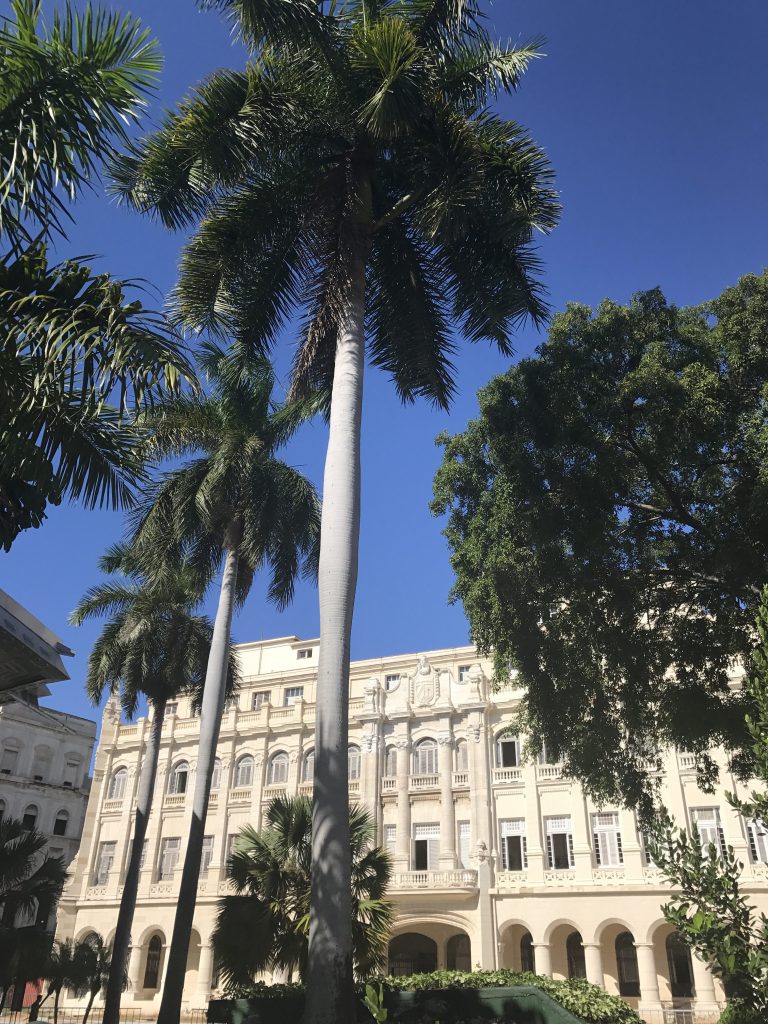
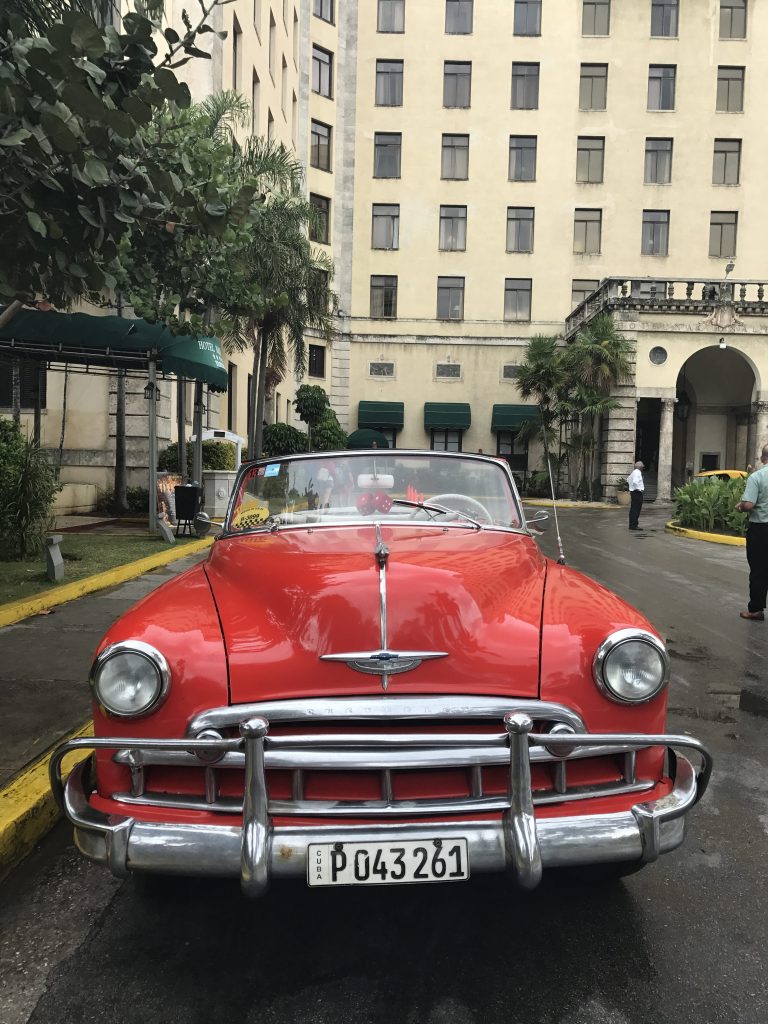
We explored all the streets of Old Havana (my Fitbit registered over 25K steps!) – and then we finally picked the perfect car to take us on an hour long drive around many popular destinations in Havana … this was also a great way to see many things we haven’t gotten to yet.
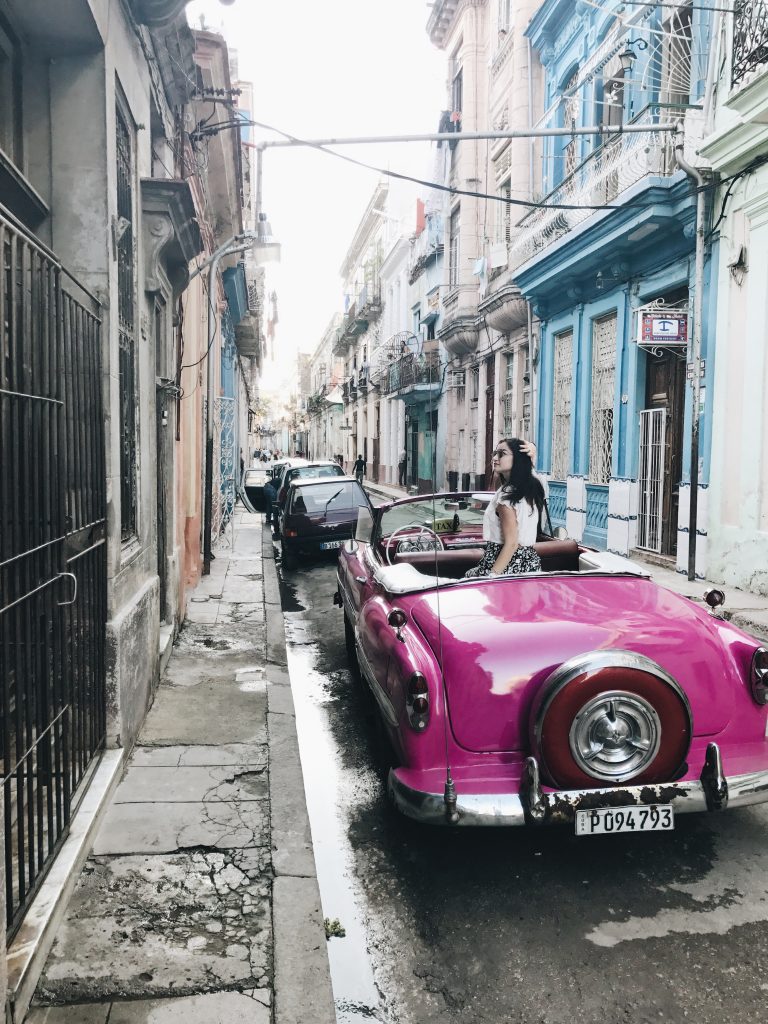
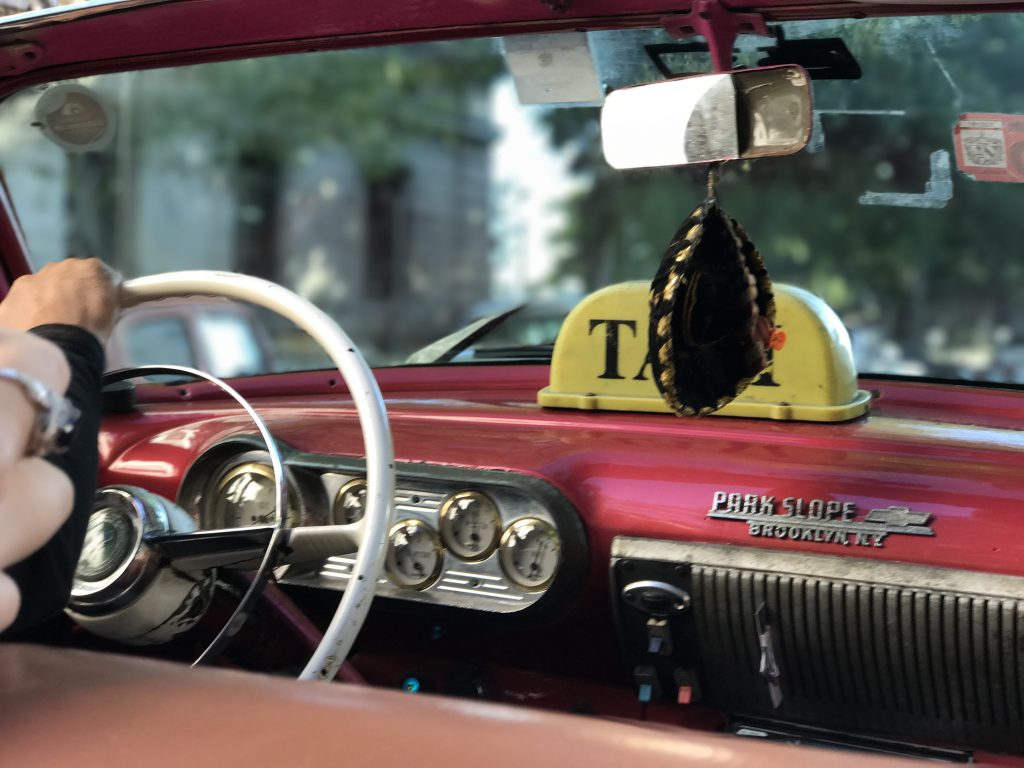
Get a feel for the city and get lost in the back streets of Havana – contrary to popular belief, I felt incredibly safe everywhere, day and night. While I think it is totally understandable that certain areas may seem less friendly than others, the reality is that they are not. The only thing you should watch out for is the friendly people that approach you and ask you where you’re from and what your plans are. These people are trying to be the “liaison” between you and a local business like a restaurant or a store so if you listen to them and follow their lead, they will get paid commission for bring you there & you might be overcharged ! This is not to say that you shouldn’t remain cautious and alert at all times, because you should always be doing that … but don’t be scared to take some turns and explore the veins of Havana.
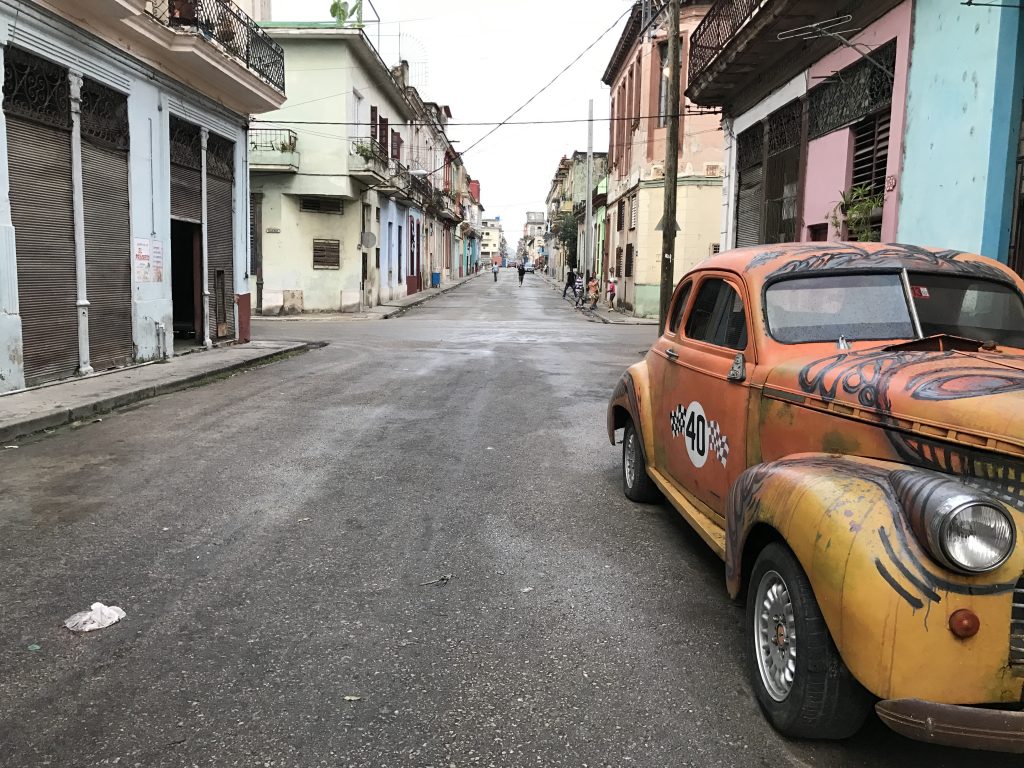
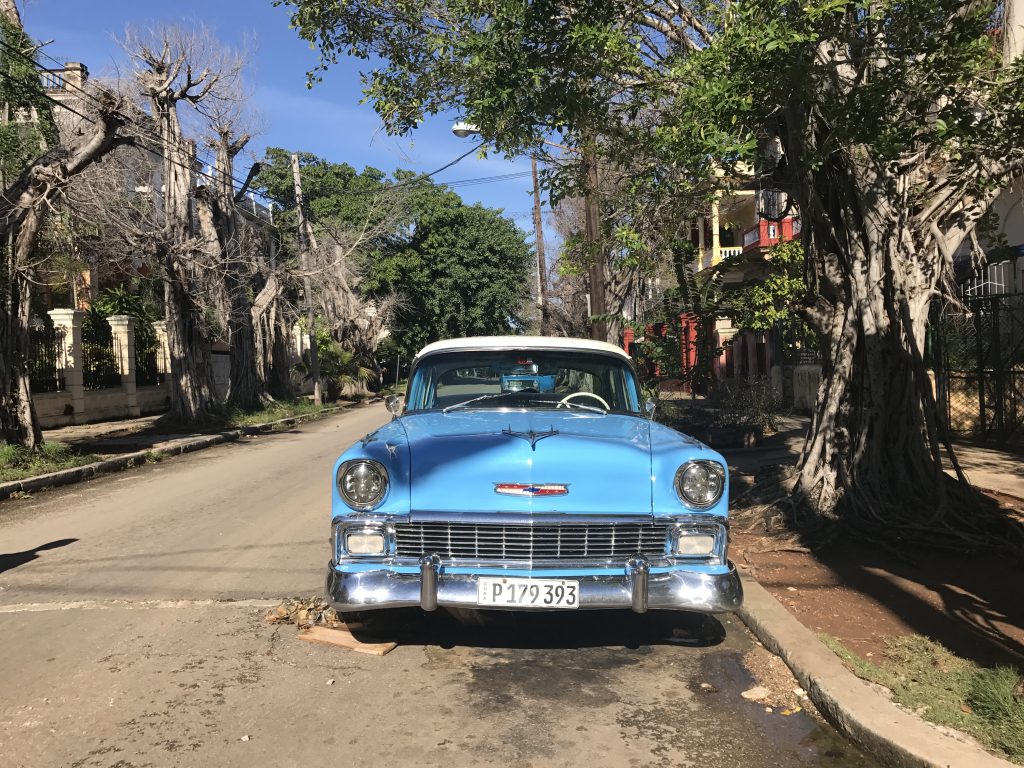

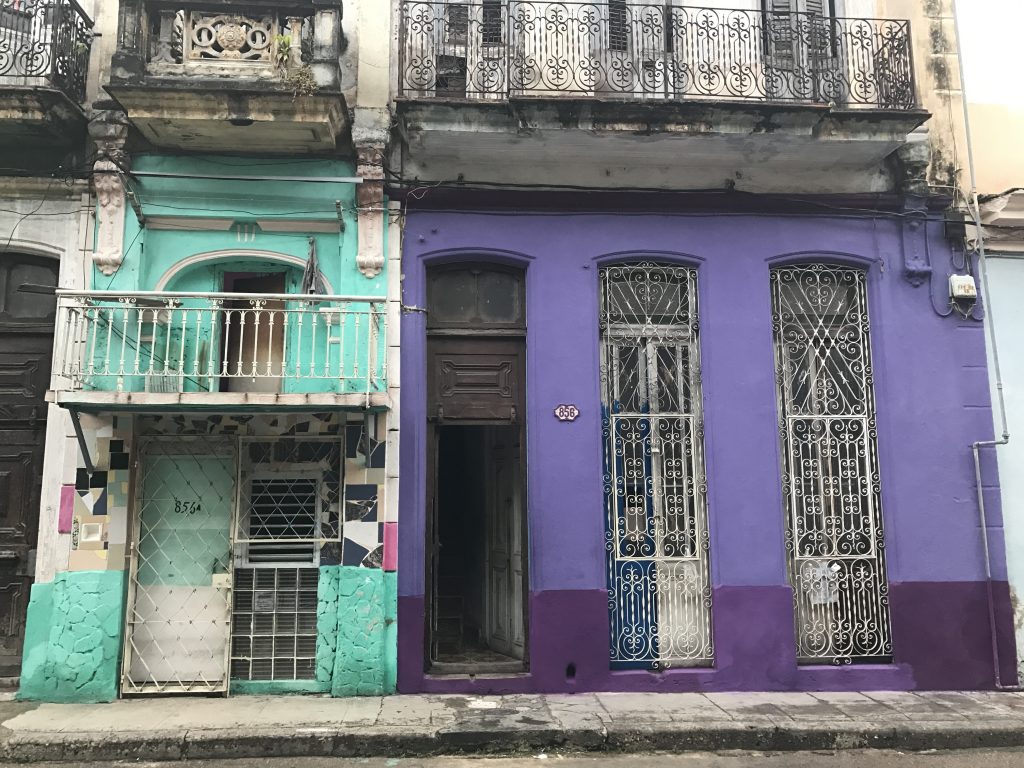
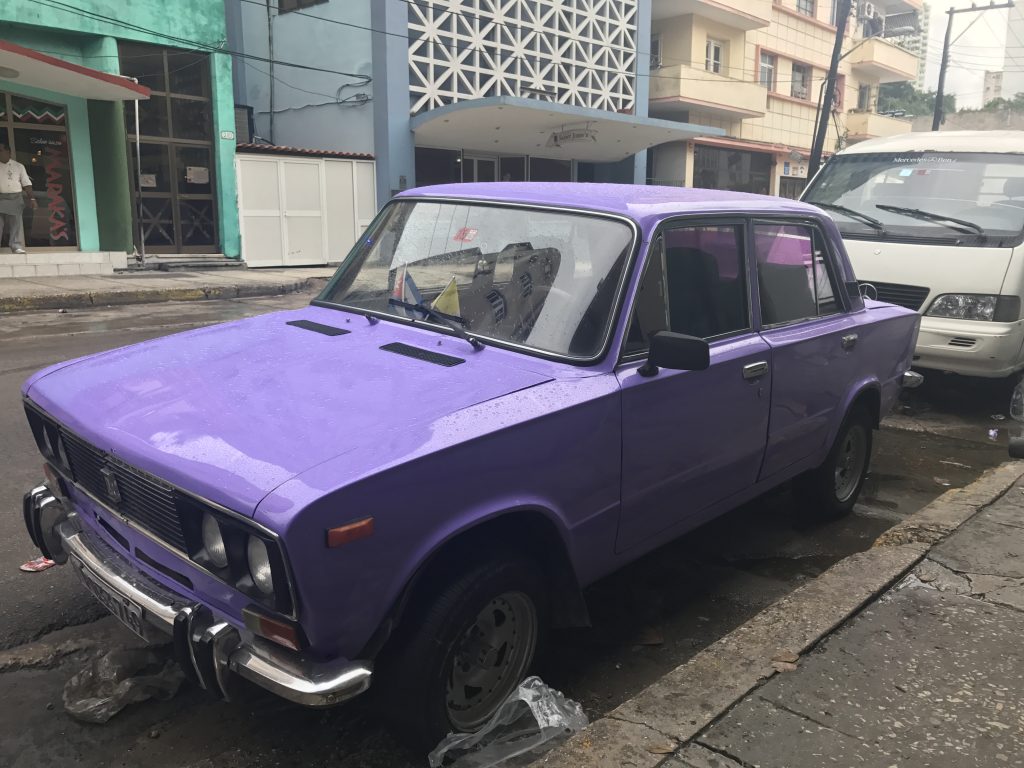
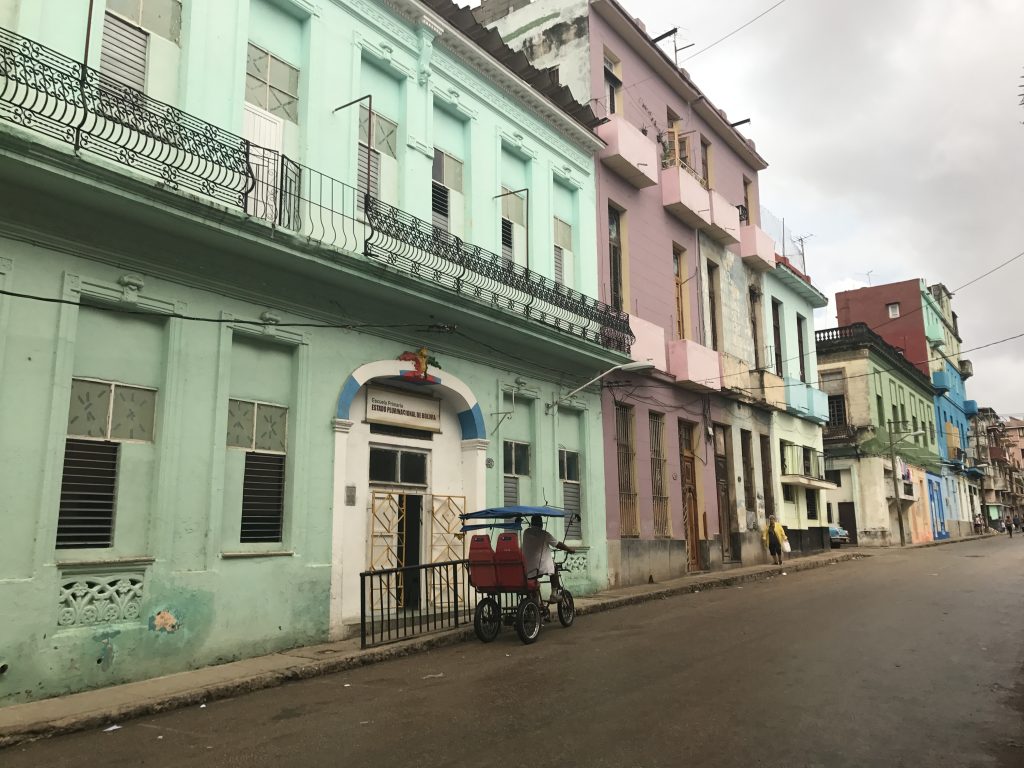
Another popular area, especially among locals, is the Malecón; a large roadway and sea wall that stretches against the coast of Havana. The waves are huge and splash onto the streets full of people that are laughing, talking and enjoying the sunset views.
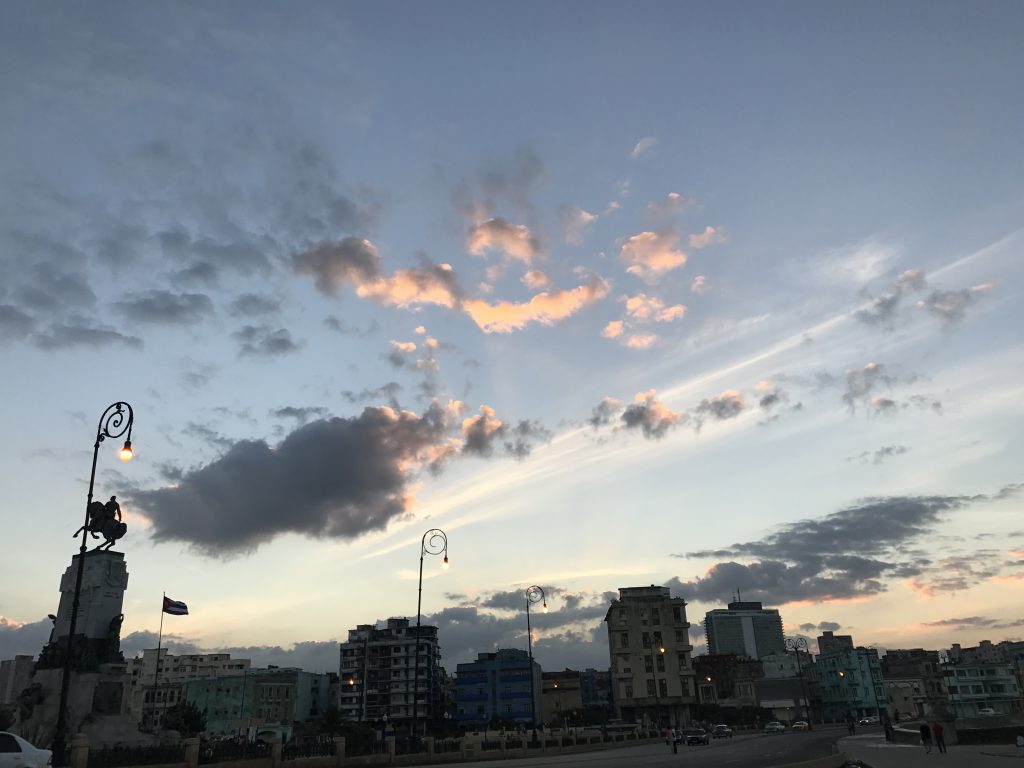
Main Takeaways
- Get Euro’s before traveling to Cuba
- Exchange money in hotels, not in cash exchange locations
- Live in a Casa Particular like the Casa Mara
- Have enough CASH to last you the entire trip
- Eat at local authentic restaurants called Cafeteria’s (make friends with your cab driver!)
- Live in Vedado … Visit Old Havana
- Pre load Google Maps before traveling and save your own locations + mine
- Google Translate is your best friend !
- Bring all the toiletries you need with you – shampoo, conditioner, lotion etc and don’t expect to take baths (showers only and water is scarce)
- Have more time ? Consider a day trip to Vinales, Trinidad, and Jibacoa
- Are you ready to book your trip ? Email me and I can help navigate you to the same people I stayed with and to my taxi driver that I can vouch for ! [email protected][/fusion_content_box][/fusion_content_boxes]
Google Map Favorite’s
Some powerful parting words that I read in an article prior to arriving in Cuba:

